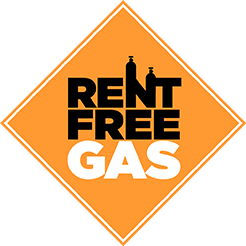Welding Gas, Pure Argon v Argon Mixtures
Argon Welding Gas Argon gas is commonly used in joining metals together or welding. The purpose of including Argon is to protect and shield the welded area from air, Oxygen and moisture. When any or all of these elements get into the welded area it will oxidise and thus weaken the join. Argon is used because it is firstly inert, or non-reactive so it does not affect the welding process. Other gases that are inert, but that are not as effective as Argon include CO2 and Nitrogen. Nitrogen is reactive at higher pressures and CO2 is used in mixtures with Argon. Secondly, Argon is more commonly used today as it is cheaper than other non-reactive noble gases, such as helium. There are a few types of Argon sold for welding applications. Pure Argon is used for applications including stainless steel, Aluminium and TIG welding of plate, tubing and sheet metal. Pure Argon is also suitable for MIG welding of Aluminium. Argon 5/2 is a mixture of 93% pure Argon with 5% Carbon Dioxide and 2% Oxygen. This blend of gas is a common welding mixture in Australia for MIG welding applications. The Argon 5/2 mix has good general properties around minimising weld spatter, good flow (allowing a fluid weld pool) and helps in creating a good welded appearance on your job. This mixture works well with MIG welding for mild steel, stainless steel, low alloy steel and galvanised steel, where the thickness of the steel is up to around 8-9mm. The addition of the Oxygen and Carbon dioxide into the Argon helps to give the arc more stability, but as mentioned earlier, it also allows the The addition of the Oxygen and Carbon dioxide into the Argon helps to give the arc more stability, but as mentioned earlier, it also allows the welder's pool to be more fluid, giving a nice presentation. Over the years we have also made specific welding mixtures for customers which include [...]

